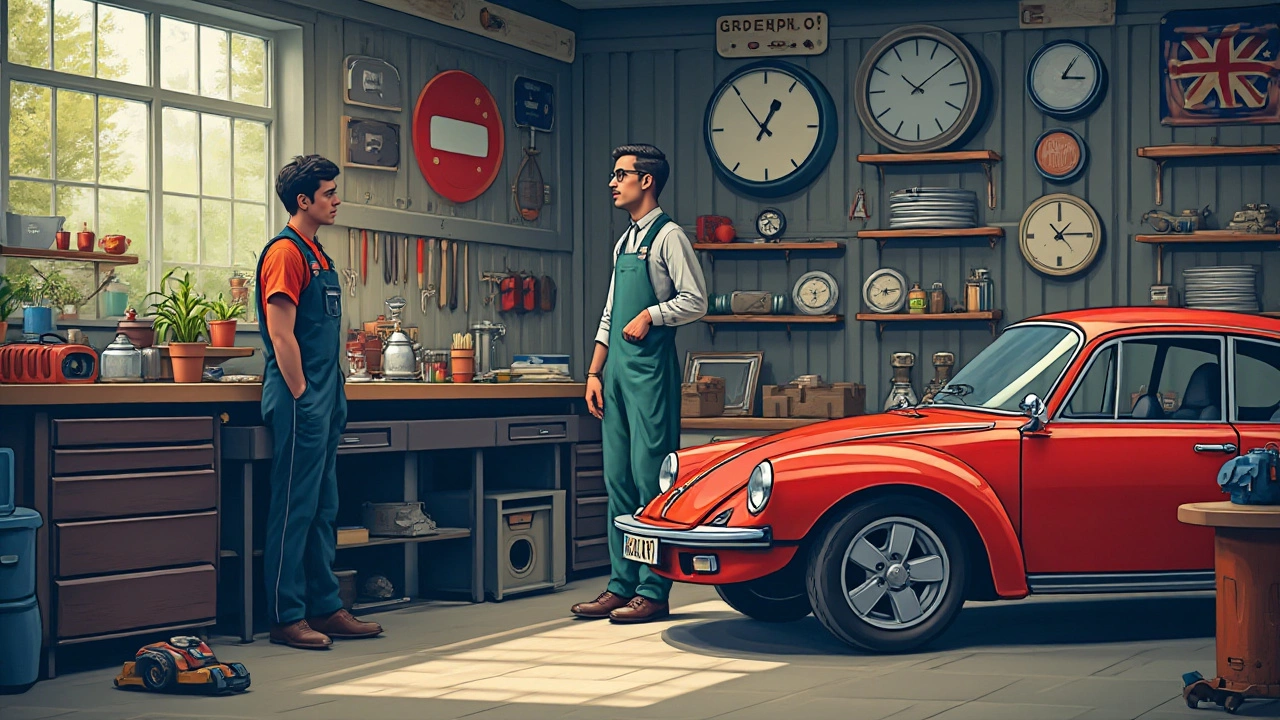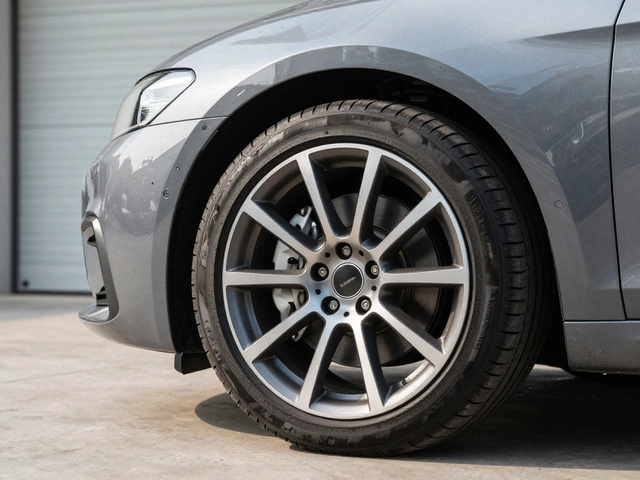For car enthusiasts, boosting the allure and performance of their vehicles often involves modifications like wheel spacers. These simple additions can dramatically change the look of a car, providing wider stances or accommodating larger brake assemblies. However, amidst the fascination, there are crucial factors to consider, especially when it comes to driving dynamics and safety aspects.
Navigating the world of wheel spacers can be a bit like venturing into the unknown, with potential impacts sometimes overshadowed by the immediate aesthetic benefits. In the thrilling journey of modifying your vehicle, understanding the possible pitfalls can save you from unwanted surprises down the line. Let’s delve into what installing wheel spacers can really mean for your beloved ride.
- Introduction to Wheel Spacers
- Advantages of Wheel Spacers
- Potential Handling Issues
- Impact on Vehicle Wear
- Safety Concerns
- Tips for Safe Use
Introduction to Wheel Spacers
Wheel spacers are the secret weapon in many car enthusiasts' arsenals, thanks to their ability to influence both the aesthetics and the handling of a vehicle. Spacers are engineered to sit between the wheel and the hub, effectively pushing the wheel out from its original mounting position. This increase in width can transform the visual stance of a car, granting it a more aggressive and robust silhouette. But these modifications are not just about looks; they can also have significant implications on performance, which is why understanding their function is vital for any responsible driver.
The primary objective of these nifty devices is to widen the track of your vehicle. By widening the wheelbase this way, a vehicle can theoretically achieve better stability, especially when cornering at high speeds. This modification can create more room for larger brake assemblies or potentially enhance traction. But beyond these immediate gains, it's important to contemplate how these adjustments might also affect the vehicle's dynamics, potentially altering its handling characteristics in unexpected ways. Not just for show, wheel spacers can significantly affect the heart of how a vehicle behaves on the road.
Benefits of Wheel Spacers
For many, the allure of wheel spacers lies in their promise to accommodate larger wheels and tires, upgrading the vehicle's ability to grip the road. They allow creative freedom in wheel selection, often enabling the use of wider or differently offset wheels without extensive modifications to the vehicle itself. In the realm of off-roading, where wider traction paths can be a game changer, spacers offer a straightforward solution. However, it's essential to ensure that the installation aligns with manufacturer specifications to avoid unintended issues.
According to Jake Loney, an automotive expert, "Using the right wheel spacer can not only enhance the performance of your vehicle but also improve its aesthetic appeal, offering a perfect blend of style and utility."
| Feature | Impact |
|---|---|
| Increased Track Width | Enhanced stability and handling |
| Room for Larger Tires | Potential for better road grip |
| Aesthetic Appeal | More aggressive vehicle stance |
While the applications and benefits of wheel spacers are enticing, they are not without their caveats. A deeper dive into the implications of changing a vehicle's geometry will reveal how each choice impacts the overall driving experience. The real magic lies in achieving a fine balance, ensuring that the enhancements align harmoniously with the existing setup, without jeopardizing the integrity of the vehicle's engineering.
Advantages of Wheel Spacers
When it comes to enhancing the appearance and performance of your vehicle, wheel spacers can offer a range of benefits that can genuinely transform your driving experience. To start with, one of the most noticeable improvements they offer is the widened stance of your car, which can lead to increased stability and better handling in various driving conditions. This change is particularly beneficial for those who enjoy spirited driving on winding roads where stability and control are paramount.
Another advantage linked to the use of wheel spacers is the possibility of accommodating larger brake systems. Many car enthusiasts opt for upgraded brakes to improve stopping power and performance, and often they find that their current wheel setup does not offer sufficient clearance for these larger components. By installing spacers, you can create the necessary clearance between the wheels and brake calipers, allowing for seamless integration of more robust braking systems.
Beyond performance, wheel spacers can also significantly improve the visual appeal of your vehicle. Pushing the wheels out closer to the fenders can give your car a more aggressive, muscular look. It's an aesthetic modification that many car lovers appreciate, offering a simple, yet effective way to make your car stand out without extensive bodywork or alterations. This cosmetic enhancement is often a prime motivator for many vehicle enthusiasts to explore the possibility of spacers.
"Wheel spacers can effectively augment the geometry of your car, both functionally and visually," notes automotive expert Jake Hanson. "They bridge the gap between appearance and performance, offering benefits that suit both aesthetics and driving dynamics."
Finally, one of the overlooked advantages of using wheel spacers is their ability to help fine-tune your vehicle's track width. By pushing the wheels outward, you can enhance the cornering grip, offering a more planted feel during turns. This could be particularly advantageous in motorsports or competitive driving, where every bit of traction and stability matters. The ability to adjust the track width without significant modifications to the suspension or wheels can also make spacers a cost-effective solution for both casual drivers and car racing enthusiasts alike.

Potential Handling Issues
When it comes to modifying a vehicle with wheel spacers, enthusiasts must pay close attention to handling dynamics. Not merely cosmetic accessories, these spacers can remarkably impact a car's responsiveness and cornering qualities. They create a wider track for the vehicle, which can dramatically alter the natural balance engineers intended. This wider track may provide more stability in straight lines, especially at high speeds, but it can sometimes compromise the car's nimbleness in tight corners.
The issue lies in the changed suspension geometry. The spacers push the wheels further from the chassis, affecting things like the scrub radius. This has the potential to increase steering effort, making the vehicle feel heavier to maneuver. Drivers might find themselves with a steering wheel that doesn’t respond to inputs with expected precision. The added leverage also puts more strain on steering components, sometimes leading to premature wear or even failure.
For performance enthusiasts who regularly take their vehicles to the track, there's an added consideration. The added width can lead to increased tire scrub when turning. This is not only detrimental to tire life but can also impact lap times. The altered dynamics can also lead to understeer or oversteer, depending on whether the spacers are on the front, rear, or both axles. It's vital for drivers to adjust their handling expectations and driving technique accordingly.
"Drivers often overlook how a simple change can really affect the response of their car in a track environment," says renowned motorsport engineer Jon Thompson. "It’s crucial to understand these dynamics before making a decision."
For daily driving, these changes may not always be welcome. In urban environments, where quick steering inputs are necessary for city maneuvers, a difference in the car's behavior can lead to awkward situations. Adapting to a vehicle that reacts differently might increase driver fatigue over long commutes. When paired with the wrong wheel and tire combinations, this could also lead to irregular tire wear patterns, affecting not just performance but tire longevity as well.
Ultimately, if you're considering wheel spacers, it’s wise to consult with a professional or a suspension specialist. They can help ensure the modifications won’t negatively affect daily driving or the specific conditions you face. Simulator technology or static analysis tools can offer insights into how these changes will play out in real-world conditions, mitigating the risk of unexpected handling quirks.
Tips for Improved Handling
- Align your vehicle post-installation to ensure suspension geometry remains optimal.
- Consider upgrading steering components if heavy-duty usage is anticipated.
- Experiment with different spacer widths to find a balance that maintains desired handling traits.
- Consult a professional driver trainer to adapt handling skills to any changes introduced.
Impact on Vehicle Wear
When considering the addition of wheel spacers to your vehicle, it is crucial to examine not just the improved aesthetic and potential performance benefits, but the impact on vehicle wear as well. Wheel spacers can dramatically alter the geometry of your car, and with such changes, the stresses on various components can increase. One of the most common concerns revolves around additional stress on the suspension system. By pushing the wheels further out, wheel spacers can increase the leverage on your car's suspension components, potentially leading to premature wear or failure.
Another aspect to consider is the increased load on wheel bearings. By shifting the wheel outward, the load can move away from the intended design parameters. This means the bearings might have to shoulder an unplanned load during operation. Over time, this altered weight distribution can hasten bearing wear and, in some cases, lead to failure. A frequent visual check for any signs of bearing wear like unusual sounds or excessive wheel wobble is always advisable.
Brake components may also face new challenges. With the installation of wheel spacers, the brake calipers might need to work harder to ensure adequate stopping power is maintained. If one chooses particularly wide spacers, there could be a risk of increased brake wear, particularly if the spacer pushes the wheel so far out that it changes the heat buildup dynamics on the brakes during heavy or prolonged use. Keep an eye on your brake pads and rotors and ensure they are in good condition after modifications.
"Drivers often find that maintaining routine check-ups and timely service appointments can mitigate some of the potential negatives of using wheel spacers," suggests automotive engineer Michael Rainsworth from the Institute of Motor Industry.
Moreover, tire wear can be impacted as well. With the wheels positioned differently, tires might feel uneven tread wear, especially if alignment issues develop due to the spacers. Regular wheel alignment is recommended to ensure the longevity and effectiveness of your tires. A realigned vehicle not only enhances tire life but also sustains optimal vehicle handling. To prevent any missteps, it is beneficial to have a professional install these modifications and monitor the health of your tires regularly.
Awareness of these factors will allow you to enjoy the benefits of wheel spacers without the potential hassle of frequent repairs. If you are vigilant and proactive about maintenance, you can manage most of the wear issues caused by wheel spacers, ensuring that you drive a vehicle that not only looks good but runs efficiently and safely.

Safety Concerns
When it comes to the allure of wheel spacers, one can't ignore safety, the backbone of any road-worthy vehicle. These tiny devices may seem innocuous, but they play a massive role in how your car interacts with the terrain beneath it. It’s not just about making room for a stylish new set of wheels; it’s about understanding how these modifications might alter your vehicle's very essence. While they have their place in automotive culture, assessing the potential safety risks is essential for every conscientious driver. Some enthusiasts have experienced changes in handling and stability because of the altered wheel dynamics.
Uneven pressure distribution can also result in premature wear and tear of both the spacers and the wheel bearings, which are critical components of your vehicle's suspension system. This wear might not be immediately noticeable, creeping up on the unsuspecting driver until a more severe issue arises. Not all wheel spacers are created equal, and using poor-quality materials can lead to structural failures, especially under high-stress conditions like cornering at speed or during abrupt maneuvers.
"The fitment and balance of your vehicle can be dramatically affected by even the slightest alteration," explains automotive engineer Mark Schultz. "It's imperative that drivers understand the importance of quality when selecting components that affect their car's safety."
There’s also the issue of correct installation. A spacer that isn’t properly aligned or secured can lead to loosening of the lug nuts and, in a worst-case scenario, the detachment of a wheel. This scenario presents a grave danger not only to the driver but also to other road users. In such cases, over-torquing the nuts or bolts is another common mistake that can lead to bolt failure. Most seasoned mechanics stress that whenever such modifications are made, routine checks are vital to maintaining the integrity of the vehicle.
Responsibility should guide every decision when it comes to handling a car. The modifications that involve vehicle safety should be approached with caution, ensuring every part is fit for the purpose. Thanks to modern advancements, many high-quality wheel spacers meet international safety standards and are meticulously tested to prevent possible risks. Making informed decisions and consulting with professionals means enhanced assurance that what you’re doing won’t compromise your car’s safety.
Tips for Safe Use
When incorporating wheel spacers into your vehicle, safety should always be a top priority. The right approach can enhance your car's performance while ensuring that safety is not compromised. It's crucial to select high-quality spacers made from durable materials such as aircraft-grade aluminum. This helps prevent rust and corrosion, which could lead to failures over time. Spending a bit more initially can save you from costly damage or even accidents in the long run. Vehicle safety should never be compromised for aesthetics or marginal performance improvement.
Before installing wheel spacers, it's imperative to consult your vehicle's manufacturer guidelines regarding the recommended offset and specifications. Deviating too far from these parameters might lead to uneven wear on brake pads and tires, or potentially stress the wheel bearings and suspension components beyond their intended capacity. Keeping within these guidelines not only keeps your car insurers happy but also extends the life of various vehicle components. A detailed inspection of your current setup can provide invaluable insights into the feasibility of modifications, ensuring they align with the structural design of your vehicle.
A crucial aspect to verify is the proper installation torque of the spacers. Failure to tighten the wheel spacers to the recommended torque specifications can lead to vibrations, imbalanced performance, and even the risk of a wheel becoming detached from the vehicle.
“Accurate torque settings ensure vehicle safety when using wheel spacers,” states renowned automotive engineer Alex Greene.Utilizing a torque wrench when installing wheel spacers can help alleviate any margin of error, ensuring that each bolt is secured firmly and evenly. Rechecking these settings periodically helps maintain the rig's reliability over time.
Regular maintenance checks post-installation are vital. Keep an eye out for wear or unusual noises coming from the wheels which can be early signs of misalignment issues. This proactive approach can prevent minor issues from escalating into significant concerns, providing peace of mind on each drive. It's advisable to take your vehicle for professional alignment services after installing spacers to ensure everything is as it should be, delivering optimal driving performance and safety. Leveraging professional expertise can identify problems that might not be apparent at first glance.
Finally, make sure to avoid mixing and matching spacers and studs from different manufacturers without ensuring compatibility. Incompatibility can lead to uneven wear and tear, affect the handling of the vehicle, and could significantly undermine your efforts to maintain a safe car modification project. Balancing aesthetic desires with practical requirements can enhance both the appearance and performance of your automotive endeavors, while also aligning with best practices for car modifications.




